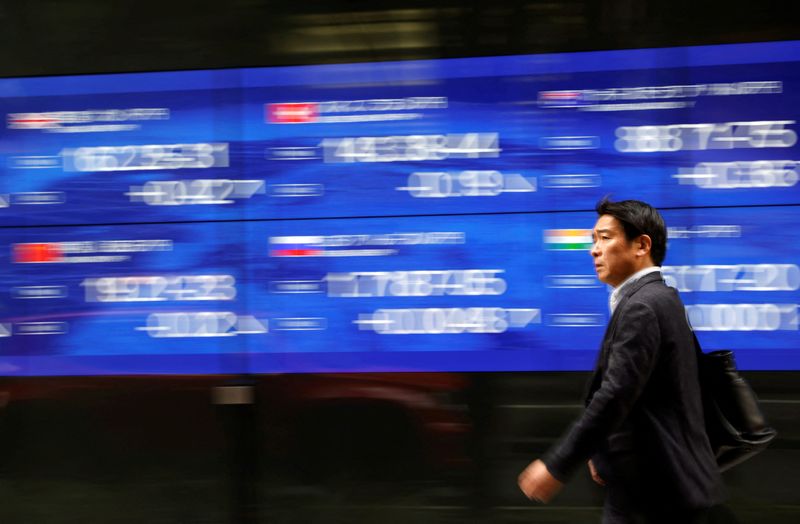By Jamie McGeever
(Reuters) - A look at the day ahead in Asian markets.
China's markets open on Monday after the Lunar New Year holiday, with investors hoping positive momentum across the region last week can continue despite signs that U.S. inflation, and therefore interest rates, may be stickier than thought.
Asian stocks are on a decent run - the MSCI Asia & Pacific ex-Japan index posted its best week of the year last week, a gain of 2%, and its longest weekly winning streak in over a year of four 'up' weeks in a row.
Was it a coincidence that China was closed? Investors may draw their conclusions on Monday as China reopens for trading.
There are signs that the China gloom may be lifting, even if only temporarily. Equities have rebounded from five-year lows, and official figures on Sunday showed that tourism revenues in the Lunar New Year holidays beat pre-COVID levels.
The data will offer relief to policymakers battling slowing growth, deflation risks, weak consumer demand and a property sector collapse, although the sustainability of the tourism boost remains uncertain.
China's central bank on Sunday left a key policy rate unchanged as expected when rolling over maturing medium-term loans, an indication that benchmark loan prime rates will also be kept on hold later this week.
Beijing is striking a delicate balancing act to support the economy at a time when signs of persistent deflationary pressure call for more stimulus. But aggressive easing risks reviving depreciation pressure on the yuan and capital outflows.
Surprisingly hot U.S. producer and consumer price inflation figures last week pushed up Treasury yields, strengthened the dollar and raised doubts on how much the Fed will cut rates this year. Is a second wave of inflation forming?
This general tightening of financial conditions could temper any optimism in Asian market trading on Monday. Goldman Sachs's emerging market financial conditions index last week touched its highest level in three months.
The boom in Japanese markets, meanwhile, shows no sign of fading. The Nikkei rose 4.3% last week and is now up 15% so far this year, supported by growing optimism around corporate Japan's earnings prospects, and a very weak currency.
With the Nikkei within a few hundred points of new all-time highs, the market is probably ripe for a spot of profit-taking. But if the dollar holds above 150 yen and launches another test of its recent 33-year peak around 152 yen, a fresh record is on the cards.
Asia's economic calendar highlights on Monday are Thailand's fourth-quarter GDP and Japanese machinery orders. China's foreign direct investment data could also be released.
Interest rate decisions in South Korea and Indonesia, a flood of PMI reports from across the continent, and Reserve Bank of Australia meeting minutes will help set the tone later in the week.
Here are key developments that could provide more direction to markets on Monday:
- Thailand GDP (Q4)

- Thailand trade (January)
- Japan machinery orders (December)
(By Jamie McGeever; editing by Diane Craft)